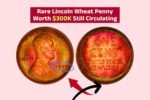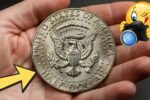1928 $20 Gold : In the world of paper currency collecting, some bills are far more than just old money — they are historical masterpieces. One such standout is the 1928 $20 Gold Certificate, which recently made headlines after selling at auction for a staggering $670,000. This once-standard banknote, originally worth just twenty dollars, has become a shining star in numismatic circles due to its rarity, historical context, and pristine condition.
But what makes this particular gold certificate so valuable? Let’s explore the rich legacy, unique features, and record-breaking significance of this remarkable piece of American currency.
What Is a Gold Certificate?
Before modern fiat currency, the United States issued gold certificates, a form of paper money that represented actual gold held by the U.S. Treasury. These certificates could be redeemed for physical gold on demand.
The 1928 series marked the last issuance of Gold Certificates for general circulation. After President Franklin D. Roosevelt’s Executive Order 6102 in 1933, Americans were prohibited from owning gold, and these certificates were withdrawn from circulation and became illegal to possess—until that restriction was lifted in the 1960s.
The Star of the Auction: A $670,000 Masterpiece
The specific 1928 $20 Gold Certificate that sold for $670,000 was a “star note”, which means it was a replacement note printed to replace a damaged or misprinted bill. Star notes are typically much rarer than standard issues, and when combined with the already-scarce 1928 Gold Certificate series, it creates a collector’s dream.
What contributed to this note’s high value?
Exceptional Condition: It was graded Gem Uncirculated, indicating it had never been used in circulation and retained crisp paper, sharp corners, and vibrant color.
Star Designation: Star notes were issued in much smaller numbers, and survivors in mint condition are incredibly rare.
Historical Importance: As one of the last gold-backed bills and a piece connected to major economic history (the end of the gold standard), it carries significant historical weight.
Collector Demand: High-end collectors and investors are increasingly drawn to rare currency, driving prices upward.
Key Features of the 1928 $20 Gold Certificate
Portrait: Andrew Jackson
Color Scheme: Bright gold overprint on the face, especially the serial numbers and Treasury seal
Wording: The bill famously includes the phrase “IN GOLD COIN PAYABLE TO THE BEARER ON DEMAND”, which gives it the name “Gold Certificate”
Size: Small-size note (same dimensions as modern currency)
Back Design: Green, with a large “20” and intricate engravings
Why Do Collectors Love Gold Certificates?
Gold certificates, especially from the 1928 series, carry an aura of mystery and prestige. They:
Represent a bygone monetary era when U.S. currency was backed by physical gold
Were withdrawn and destroyed in large numbers, making survivors rare
Are visually distinctive, with gold-toned overprint and unique legal tender language
Offer historical insight into the Great Depression and the Gold Reserve Act
For collectors, owning one isn’t just about rarity—it’s about owning a tangible piece of economic history.
Can You Still Own a Gold Certificate Legally?
Yes. While gold certificates were once illegal to possess, the restrictions were lifted in 1964, making it perfectly legal for collectors to buy, sell, and own them. However, these notes no longer have redeemable gold value—their worth lies entirely in collectibility and historical significance.
Frequently Asked Questions (FAQs…)
Q1: What is a 1928 $20 Gold Certificate?
A: A 1928 $20 Gold Certificate is a paper banknote issued by the U.S. Treasury that was backed by gold. It was part of the last series of gold certificates issued for general circulation before gold ownership restrictions were enacted in the 1930s.
Q2: Why did this particular $20 Gold Certificate sell for $670,000?
A: This note was:
-
A star note (a rare replacement for a misprinted bill)
-
In Gem Uncirculated condition
-
From the historically significant 1928 series
Its rarity, perfect preservation, and desirability among collectors drove the record-breaking auction price.
Q3: What does “star note” mean?
A: A star note has a small star symbol at the end of its serial number. These are used to replace damaged or misprinted notes during production and are typically much rarer than regular notes from the same series.
Q4: What makes gold certificates special?
A: Gold certificates were redeemable for actual gold until 1933. They feature unique gold-colored printing and historical text like “IN GOLD COIN PAYABLE TO THE BEARER ON DEMAND,” making them highly collectible and symbolic of a different era in U.S. monetary policy.
The $670,000 sale of the 1928 $20 Gold Certificate is a testament to the enduring allure of rare paper money. It’s a reminder that beyond coins and bullion, some of the most valuable treasures in the numismatic world are printed on fragile sheets of paper.
Whether you’re a seasoned collector or a curious newcomer, this extraordinary note proves one thing: history can be hidden in your hands—and sometimes, it shines in gold.




